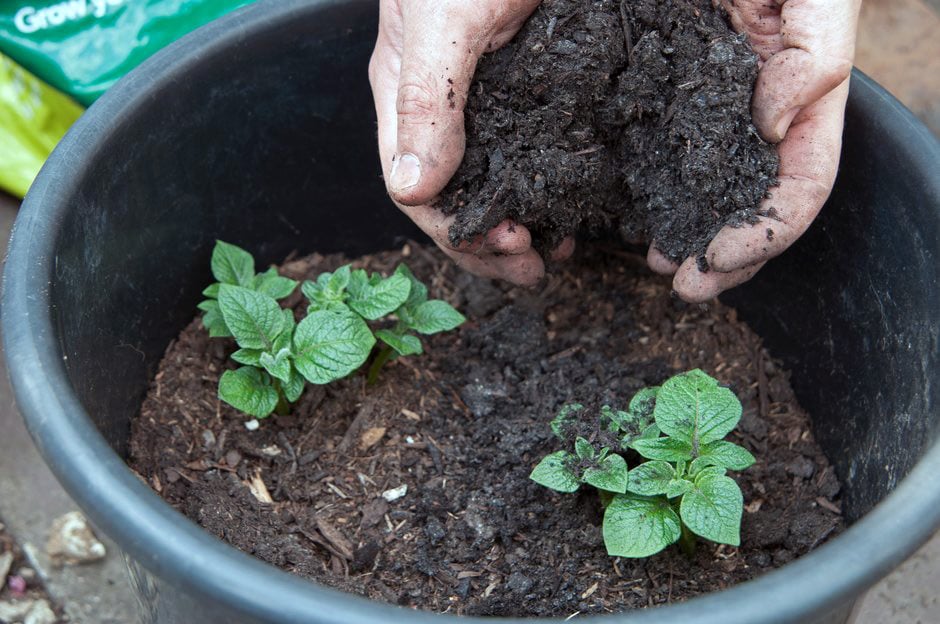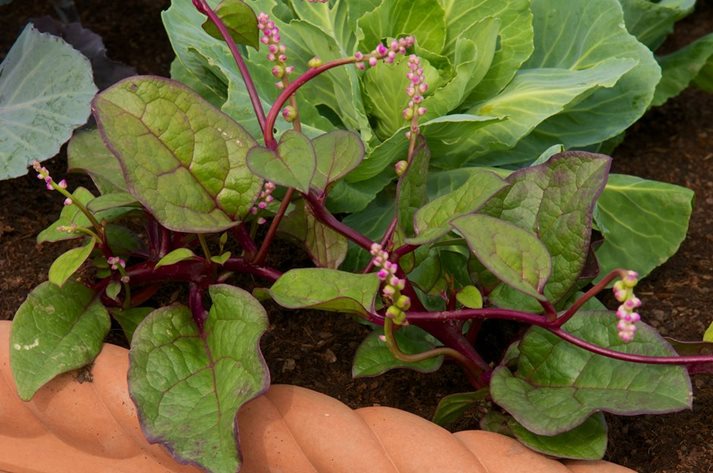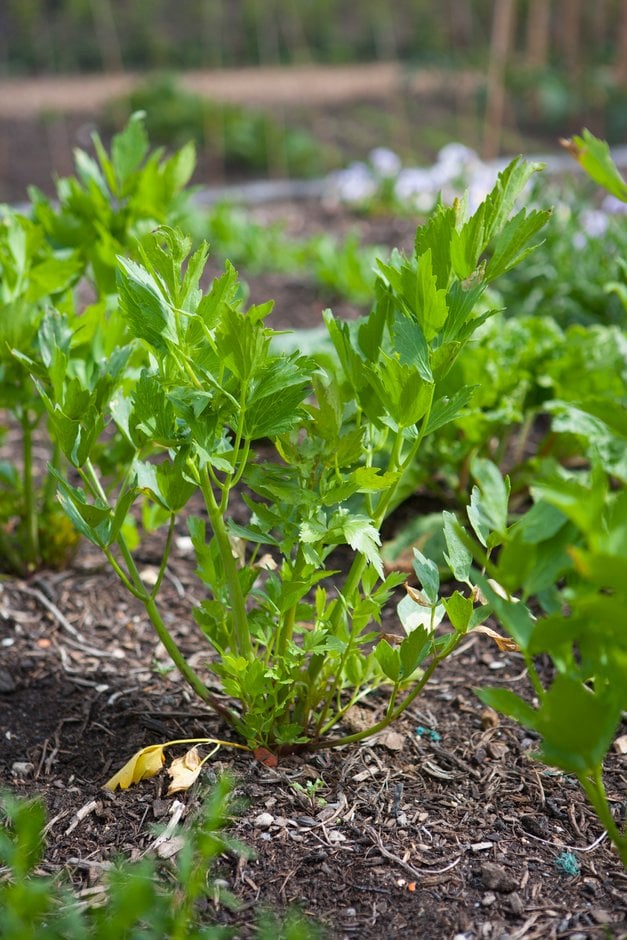Use this time in December to reflect and plan for the year ahead, says RHS Horticultural Advisor Marcia Peacock

 Allotments and edible gardens evolve over time, meaning crop rotation and permanent planting plans benefit from regular review. Gardening is a learning curve, so use this month to reflect and plan. Consider what to grow and where, plus reposition woody and perennial fruit and veg while dormant.
Allotments and edible gardens evolve over time, meaning crop rotation and permanent planting plans benefit from regular review. Gardening is a learning curve, so use this month to reflect and plan. Consider what to grow and where, plus reposition woody and perennial fruit and veg while dormant.
Try something new
Cold, wet days in December are perfect for browsing seed catalogues or nursery websites selling bare-root fruit trees and bushes (preferably in the warm, with a cuppa). I recommend placing your orders early while the full range is available.
Crop lists have altered a lot over the last decade with the addition of many lesser-known exotic edibles, some of which are grown in the World Food Garden at RHS Garden Wisley. Obscure 18th century favourites are also making a comeback in historic kitchen gardens like Hampton Court. There are an increasing range of disease resistant and drought tolerant cultivars – worth having in our changing climate!
 When I first got my allotment 18 years ago, I hadn’t heard of Basella alba (Malabar spinach) or Ugni molinae (Chilean guava), but now they are firm favourites in my house. A number of traditional crops, which I once allocated a considerable amount of time and space to grow, have had their space reduced.
When I first got my allotment 18 years ago, I hadn’t heard of Basella alba (Malabar spinach) or Ugni molinae (Chilean guava), but now they are firm favourites in my house. A number of traditional crops, which I once allocated a considerable amount of time and space to grow, have had their space reduced.
So try to be flexible in your approach, there are often new ways of doing old things.
Pots of potatoes
I save space by growing potatoes in large plastic bins with holes drilled out for drainage. This makes harvesting them much easier, with no missed tubers, which re-sprout potentially disturbing the following crop, and no fork spearing when digging out (just tip out the container). It can also help to avoid slug damage and soil borne diseases.
Allow for 8 litres of compost per seed potato for a good crop. Try first earlies ‘Sharpe’s Express’ AGM and ‘Casablanca’ AGM or second early ‘Jazzy’ AGM. Since potatoes are also relatively cheap to buy at the supermarket, I feel ground space is better put to use for leafy salad crops and fresh herbs (which are more expensive to buy). In addition, such crops are at their best and last longer when freshly picked from the plot.
With little space to store piles of potatoes and just myself to feed, I take time to consider how much I need to grow of each crop. Once decided, I can then reduce the amount of ground space to allocate.
Note it down
Record what annual crops you grow, noting which benefit from the use of crop rotation (this helps prevent disease build-up and nutrient depletion). It is also useful to note time of sowing, planting and harvest dates. These dates will vary each year depending on weather conditions, but serve as a useful basis for planning successional sowing and intercropping for the following year.
Get moving
 In my shift toward growing a more diverse range of edibles, I now have more perennial crops – many of which are invigorated by lifting and dividing every four or five years. Rhubarb and loveage plants are due for division this winter with any spare roots given to friends and fellow allotmenteers.
In my shift toward growing a more diverse range of edibles, I now have more perennial crops – many of which are invigorated by lifting and dividing every four or five years. Rhubarb and loveage plants are due for division this winter with any spare roots given to friends and fellow allotmenteers.
A bigger task this month is moving my blueberry plants to a shadier spot. Even on one plot, growing conditions can vary, and one end of my plot, near the boundary, has become shaded by scrub trees. Fortunately, blueberries will crop well in part-shade, and in moving them, I’ll free up a sunny area. I sometimes wish I’d grown them in pots – which would have been easier to move!
Deciduous plants, such as blueberries, gooseberries, currants and raspberries, are best moved when dormant (between late October and early March). Although there is no urgency to do it this month, it is sensible to get it done while the ground is not frozen or waterlogged.
My blueberries were planted about 4 years ago, so I’ll gauge the extent of the root spread in order to dig up the root system intact. Pruning them before moving will reduce the amount of top growth and help the roots to recover and re-establish.
 The younger the bush, the better chance it has of transplanting well. Although large, mature plants can still be moved successfully, if a large enough root ball can be removed and sufficient aftercare given. Staking plants post-move helps prevent wind-rock.
The younger the bush, the better chance it has of transplanting well. Although large, mature plants can still be moved successfully, if a large enough root ball can be removed and sufficient aftercare given. Staking plants post-move helps prevent wind-rock.
My blueberry plants will be watered in well after re-planting, even if rain is forecast. I must also remember to water them during prolonged dry spells over winter and during next year’s growing season.
Don’t get wet feet
It’s best to avoid cultivating soil and especially planting when the ground is frozen or waterlogged as this can damage a plant’s structure and its roots can rot if submerged. If you have a heavy clay soil, or a high water table, unfortunately this can mean short windows of opportunity to carry out work.
Try working off wooden boards to reduce soil compaction, and if soil stays wet for prolonged periods, consider improving drainage by incorporating more organic matter, mound planting or building raised beds. The latter raises plants above the natural water table.
Don’t be afraid to make changes and adapt what you grow to be site specific and suit your food preferences. Happy growing!
 Pick of the crop
Pick of the crop
Look for the RHS Award of Garden Merit (AGM) when buying vegetable seed or small plants. You can also download the RHS lists of recommended cultivars.
You may also be interested in...
About the author - Marcia Peacock
I became an RHS Horticultural Advisor 4 years ago – I’ve worked in horticulture for nearly 25 years, starting in a nursery, before moving into soft landscaping and garden maintenance. My Dad and I have kept an allotment together for 18 years where we grow vegetables, salad, fruit, and cut flowers.

